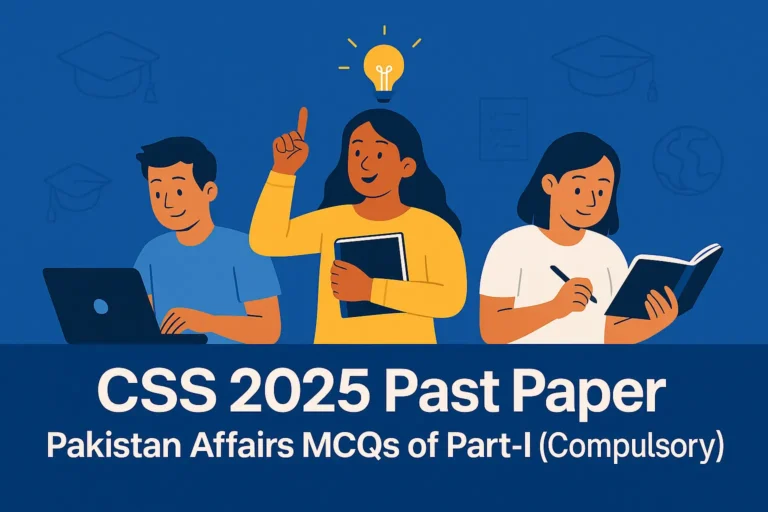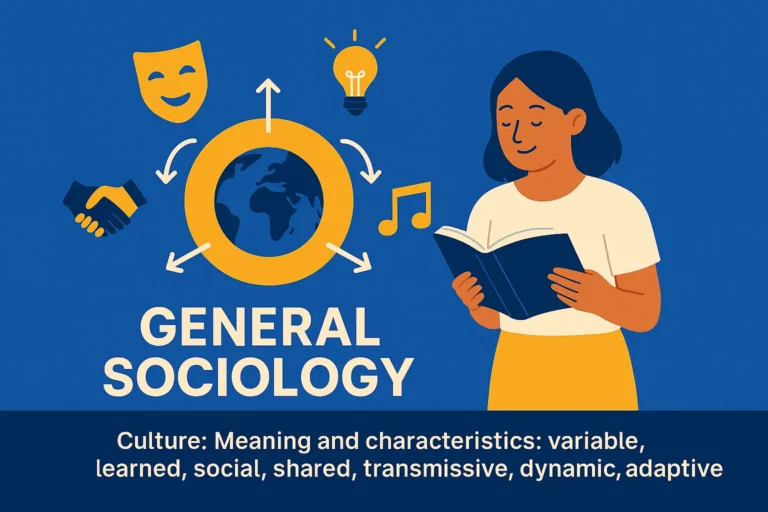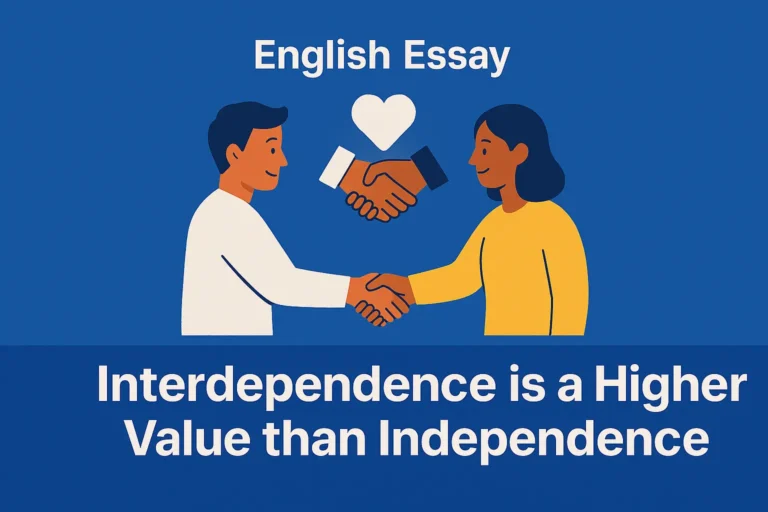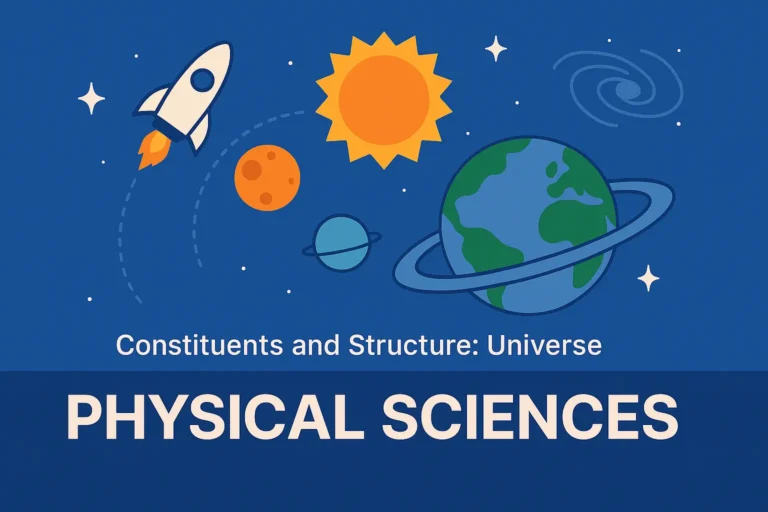Problems of Literacy
(English Essay – CSS & PMS)
Outline
- Introduction
- Importance of Literacy in Society
- Current Literacy Profile of Pakistan
- Regional and Gender Disparities in Literacy
- Causes of Low Literacy Rate
- Internal Causes
- Dropouts
- High Opportunity Cost
- Economic Poverty and Dropout Rates
- Low Female Enrolment
- Distance and Lack of Facilities
- Substandard Textbooks and Irrelevant Curricula
- Non-Motivated Teachers and Their Harsh Attitude
- Role of Adult Education
- Region-Wise Factors and Need for Reforms
- Conclusion
Introduction
Literacy is really important in today’s world. People who can read and write are more aware of what’s happening around them, socially, politically, and economically. They help their society grow and move forward. But those who can’t read or write often struggle and end up being a burden on both themselves and others. They do hard, low-paying jobs and live a tough life, like an ox doing heavy work without progress.
A country with high illiteracy can’t grow in any area. So, if we want Pakistan to become strong and stable, we need to work hard to reach 100% literacy. It will help people think better and understand their problems more clearly.
Importance of Literacy in Society
When people develop this mindset, they start solving their problems with the help of honest and dedicated leaders. In Pakistan, democracy is still weak, but it can become stronger if educated people use their vote wisely to choose the right leaders. The society would gain tremendously if there were 100 percent literacy. The literate are conscious about cleanliness and hygiene. In short, a literate society shows a better psyche in all aspects of life. It begins to show respect for the rule of law; there is no violation of traffic rules. Literacy thus creates an overall sense of responsibility among the people. People cease to be victims of superstition. They accept rationality as the guiding line in their daily matters.
What transpires from the preceding paragraph is that basic literacy and life skills are to be acquired if Pakistan is to be on the path of progress. Pakistan’s profile on this count is not an encouraging one, when compared to Sri Lanka and the Maldives, where there is nearly a hundred percent literacy.
Current Literacy Profile of Pakistan
By 2007, the literacy rate in Pakistan for individuals aged ten years and older had reached 56 percent. The Pakistan Social and Living Standards Measurement (PSLM) Survey 2007–08 reported that literacy among males was significantly higher at 69 percent, while the female literacy rate was recorded at 49 percent.
Regional and Gender Disparities in Literacy
The survey shows a big gap in literacy between urban and rural areas. Around 71% of people in cities can read and write, but in rural areas, only 49% are literate. Looking at the provinces, Punjab has the highest literacy rate at 59%, followed by Sindh with 56%. Khyber Pakhtunkhwa (formerly NWFP) is at 49%, and Balochistan has the lowest at 46%. These numbers make it clear that Pakistan still has a long way to go to reach 100% literacy. Reaching that goal will take a lot of hard work and strong determination.
Causes of Low Literacy Rate
It’s important to look at the reasons behind the low literacy rate in Pakistan. These reasons are different in nature; some are related to education itself, while others come from outside the school system. To better understand the issue, the causes can be divided into two main groups: internal and external. It helps explain what’s going wrong both inside the education system and outside of it.
1. Internal Causes
The idea behind Universalization of Primary Education (UPE) is that every child, boy or girl, should get free access to primary school. The official age for this level is from 5 to 9 years, and ideally, all kids in this age group should be going to school.
To check how well this is happening, we use something called the Gross Enrolment Rate (GER), also known as the participation rate. It shows how many kids aged 5 to 9 are actually in school compared to how many should be. It’s a simple formula: the number of children aged 5–9 who are in school divided by the total number of kids in that age group.
A higher GER means more kids are joining school at the right age, which is exactly what UPE aims for.
Cent percent GER does not take place, though it shows an increase. If all the children of the relevant age group join the primary schools, it can yield the highest percentage of UPE. At the same time, additional inputs in the form of teachers and other facilities, including the provision of furniture, etc., are not made available by the provincial governments owing to paucity of financial resources and other economic constraints. The additional enrollment every year fails to be followed by an additional increase in educational inputs.
That does not help to achieve a hundred percent Universalization of Primary Education (UPE), and that hinders the attainment of a high literacy rate.
2. Dropouts
Many parents in rural communities struggle to afford even the basic expenses of their children’s education, such as purchasing books and essential stationery. It is the poverty of the parents that prevents them from sending their children to primary school. That greatly reduces the Gross Enrolment Rate at the primary level, which keeps the literacy rate at a low level.
3. High Opportunity Cost
Another factor for low enrollment at the primary level is the high opportunity cost of children who, instead of attending the schools, could help and assist their parents in a number of ways to increase their income.
Time spent in schools is often viewed as economically unproductive since it does not bring immediate income to families. In contrast, if the same hours were devoted to grazing cattle or performing small tasks in the agricultural fields, poor households could see an indirect boost in their earnings. Hence, it is regarded as economically productive to keep the children of the relevant age group out of primary schools.
The children of the poor families in the urban areas are seen doing the job of apprenticeship in auto-rickshaw workshops, earning a paltry amount of money. The children join rug factories where most of their childhood is spent. It shows that it involves an opportunity cost of sending the children to primary schools, thereby resulting in the lowering of enrolment at the primary school level.
4. Economic Poverty and Dropout Rates
A worrying aspect of the education system is the high dropout rate, as many children are unable to complete the full five-year cycle of primary schooling. More than half of the students leave after just the third grade. It not only disrupts their learning but also results in a considerable waste of educational resources and efforts.
It gives a setback to achieving the given target of universalization of primary education. Economic poverty appears as the main villain in achieving UPE.
5. Low Female Enrolment
Many poor parents do not realize the true value of education, which results in low enrolment at the primary level. With limited exposure and little awareness, illiterate parents often fail to see how education could change their children’s future and open new opportunities.
When it comes to girls’ education, the situation becomes even more challenging due to several reasons:
- Poverty, lack of awareness, and traditional mindsets among parents create resistance towards sending girls to school.
- Uneducated mothers often don’t encourage their children to study, and in rural and tribal areas, strong social barriers make things even harder.
- There aren’t enough girls’ primary schools nearby, and the ones that do exist are often too far away to reach safely.
- A strong demand from families for separate schools for boys and girls.
- Little to no incentives for families to educate girls, and limited motivation among teachers to work with full dedication in such environments.
All these factors together contribute to the persistently low enrolment of girls at the primary school level.
6. Distance and Lack of Facilities in Schools
There are also other reasons that keep primary school enrolment low, and this affects the overall literacy rate in the country. In many regions, children are required to travel long distances to reach the nearest primary school. This physical distance often discourages parents from sending their children to school. Along with this, the lack of basic facilities, such as proper classrooms, furniture, and learning spaces, further reduces the willingness and ability of families to enroll their children at this stage.
7. Substandard Textbooks and Irrelevant Curricula
The need is to introduce textbooks and to correlate curricula to the relevant social and economic needs of children.
8. Unmotivated Teachers and Their Rigid Behavior
At the primary level, many teachers lack enthusiasm for their work, which reflects poorly on the learning environment. Their disinterest not only discourages young learners but also leaves a lasting negative impression on their minds. More importantly, the harsh behavior of some teachers towards students becomes a major reason behind the declining enrollment rates in primary schools. Many teachers absent themselves from schools but receive regular pay through the connivance of monitoring staff. The monitoring mechanism is defective, which needs to be geared up at the appropriate level.
Role of Adult Education
Adult education deserves special mention, as it goes beyond simple literacy to include functional literacy programs as well. Its main purpose is to ensure that every citizen has access to learning opportunities. In this regard, the formal primary school system is supported and strengthened by non-formal educational initiatives, making education more inclusive and accessible. There is a need to launch a non-formal Basic Education Program to bring children and adults who are present out of the school system. A different non-formal syllabus is the need of the hour. The aim is to cover 10-14-year-olds and to expose them to the primary education cycle in 2–3 years.
The goal seems appealing, but its success is uncertain, since many adolescents prioritize earning money to support their financial needs over pursuing formal education.
Region-Wise Factors and Need for Reforms
There is a need to identify the region-wise factors contributing to low enrolment and dropouts. The provincial governments should try to remove the factors inhibiting the phenomenon above to achieve a high level of literacy.
The literacy level needs to be raised with a view to providing a congenial environment for the people to understand their socio-economic problems. Once people’s level of awareness through a higher literacy level is raised, it would be to the advantage of the country.
It would lend sustenance to the cause of democracy, because a stable democracy would go a long way to build and sustain institutions, which are the critical need of the time.
Conclusion
Economic poverty needs to be alleviated to create demand for education on the part of poor families. Alleviation of poverty would help to reduce dropouts and upgrade the level of literacy.
Above all, we need a committed leadership, which shows the high political will to achieve hundred percent literacy in Pakistan. It must happen if the stigma of illiteracy is to be removed from the face of Pakistan.
Click here to find more articles on English Essay.






